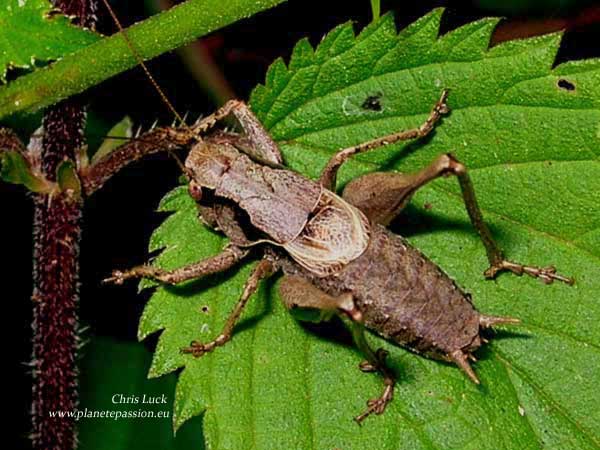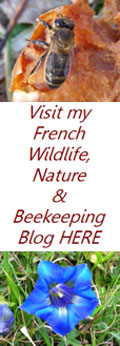

Insects in the family Tettigoniidae, (Tettigoniids), are commonly called Bush crickets in English in the UK and Sauterelles in France. In the USA and some other countries that use the English language they are called Katydids. (Esperanás in Portugal, Grillos in Spain, and Laubheuschrecken in Germany).
If using a dictionary or auto translate the French word Sauterelle will usually translate as Grasshopper BUT this is not correct. The correct French word for Grasshopper is Criquet.
Both belong to the same group, Orthoptera, and they do share certain features such as straight wings and large muscular rear legs for jumping BUT Bush Crickets have long antennae, often many times the length of their body, whereas Grasshoppers have short antennae. Grasshoppers have short, thick ovipositors* and Bush Crickets have long straight or curved sharp ovipositors. Grasshoppers are vegetarian whereas most Bush Crickets in France are omnivorous, feeding on vegetation, seeds, carrion and occasional prey and there are some that species that are 100% carnivorous. Many species of Bush Cricket are herbivores when in their early or nymph stages. Grasshoppers are active during the day whereas Bush Crickets main periods of activity tend to be nocturnal.
There are around 100 species of Bush Cricket in France and a similar number of Grasshopper species, some to be found in almost all regions, others restricted by habitat and climatic factors.
Males attract females by singing and this song is produced using stridulation, what we often call chirping. Typically this mechanism consists of a file (series of pegs) and a scraper (thickened ridge). Rubbing together of the file and scraper produces the characteristic sound that we are accustomed to. With Bush Crickets a file on one wing is rubbed by a scraper on the other wing. Most females respond with silent phonotaxis (approaching the sound source) but there are some that respond acoustically. During copulation, the males provide a nuptial gift for the females in the form of a spermatophylax as part of the spermatophore, a nutritious body produced with the males' emission that she consumes.
Following mating the female uses her ovipositor to place her eggs in a variety of places depending on the species. Typically this is either in or on plant matter or in the soil. Here the eggs will spend at least one winter or possibly two before hatching in the spring. Temperature is important for the egg developement and generally a period of cold is also required.
They have an incomplete metamorphosis, egg, nymph and adult. Bush Crickets, depending on species, pass through between 4 and 9 stages before reaching adulthood following hatching.
They use a variety of habitats, hedgerows, woodland borders, grassland, scrubland, vineyards and gardens.
The stridulation that Bush Crickets use is unique for each species with a combination of frequency and duration which can be used to identify them using a Bat Detector.
*An Ovipositor is a tube-like organ used by some animals for the laying of eggs
Below a few common species that are easily seen.
Southern sickle-bearing bush cricket


